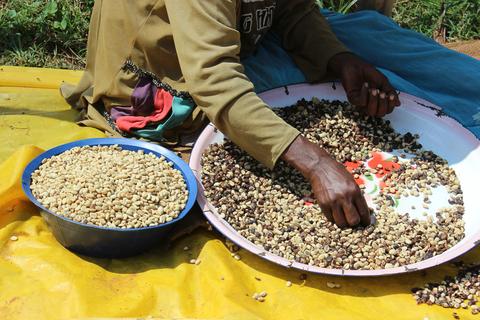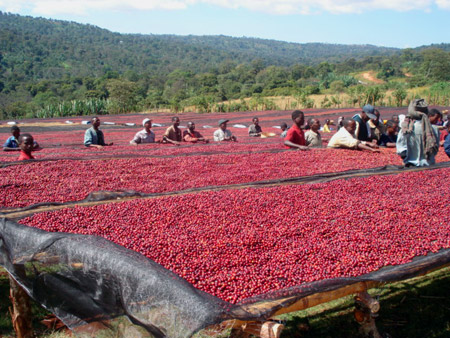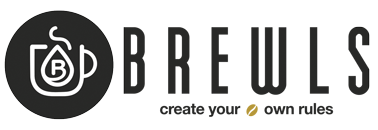by Timothy Hill,
Timothy Hill- works for Atlantic Specialty Coffee- trading, researching, writing, and generally working to innovate in the coffee industry. Tim has spent the last decade setting up supply chains in coffee, particularly in East Africa.Tim Co-authored A Reference Guide to Ethiopian Coffee Varieties in 2018.
The word heirloom carries with it ,history. It often carries the assumption of quality. It implies the idea of something that was built to last. It is a word that has a certain romance to it. It is a nostalgic word.
When it comes to plants we often think of heirloom vegetables or tomatoes. A good definition for heirloom plants or vegetables was written by Amanda Kimble-Evan who wrote, “Heirloom vegetables are old-time varieties, open-pollinated instead of hybrid, and saved and handed down through multiple generations of families.” The challenge is, while this is one definition, another person's definition for heirloom could be entirely different. Just like in vegetables, in coffee there is no formal definition of the word heirloom as it relates to the plant. However, there is one country that the coffee industry has decided to apply this word to most if not all the coffee trees. This is the birthplace of coffee itself - Ethiopia.

GELANA ABAYA, ETHIOPIA. Natural Heirloom
On a certain level this makes sense. Ethiopia has the longest history of coffee production. It is also the genetic epicenter for arabica, and hence has thousands of different types of arabica. So it does make sense if there is a country with heirloom coffee- it is going to be Ethiopia - right?
If you look at the history of coffee in Ethiopia, you have to keep in mind that much of the coffee grown in the country is relatively recent. Coffee growing expanded in the early 1900’s like most of East Africa, as it was seen as a product of great trade value. So, while there are farms and land growing coffee that do likely go back hundreds of years, most farms in Ethiopia don’t have generations of their family that have grown coffee over a few centuries. (like can be found in a country like Yemen) A lot of farms only go back 2 or 3 generations. Many, just 1 or 2. And while coffee expanded in Ethiopia in the early 1900’s - the expansion of coffee took off again in the 1970’s and 1980’s. This is an important time to focus on and understand what this entailed, as those trees planted around 30-40 years ago are likely a lot of the ones growing today.
In 1967, the Jimma Agricultural Research Center (JARC) was established in Ethiopia as an institution responsible for the development of good agricultural practices and the creation of improved plants. This was just in time, because by 1971 Ethiopian coffee was suffering due to Coffee Berry Disease (CBD), which was causing a lot of farms to lose a fair percentage of their harvest. To deal with this, the JARC went out and selected hundreds of trees between 1973 and 1975, that they then tested for resistance. Between 1978 and 1981, JARC released 13 CBD resistant varieties that they selected and bred for multiplication. During this time it is also important to know that the military communist Dergue regime was implementing land reform, pushing for agricultural development, and specifically in coffee- the government was supplying and distributing these improved coffee seedlings. Huge areas of land were developed, and even since this time coffee growing has continued to expand. Today, JARC has developed a total of 40 improved varieties, to deal with coffee leaf rust, productivity, drought, and they have even developed coffee varieties for specific regional flavor profiles.

When traveling around Ethiopia, and visiting local nurseries it is very common to see these JARC varieties being grown and distributed. Not every producer uses these varieties, as access can be limited depending on the region, but many growers over the last 40 years have planted these. Farmers in Ethiopia are like everywhere else, if given the choice between a variety that is not 100% known for a particular attribute vs. one that is, they often times are choosing a known entity instead of the unknown. It is hard to paint a complete picture though. Ethiopia is more complex than most other countries with their production systems of coffee. There is wild coffee in Ethiopia. There are varieties that farmers have been exchanged with other farmers for generations- that are known only by local names. It is acknowledged with all of this complexity, it has made it hard for buyers and professionals to fully understand and describe things well. Which brings us back to the word heirloom.
The question is why not to use it, when there is some truth behind it after all? The argument is, that by using the word heirloom it is leaving out the work researchers have done to improve the coffee in Ethiopia. That it takes away from the importance of the varieties. That also by using a blanket term when talking about the varieties- it also keeps farmers disengaged with what they are growing on a certain level. It also potentially keeps Ethiopian coffee plant researchers disengaged from industry professionals - which is potentially why the use of the word started in the first place. Why has the work of Scott Laboratories in Kenya in the 1930’s received such amazing credit for SL28 and SL34 varieties? Yet very few coffee professionals have ever heard of the the Bashari variety-74110? Or the Ethiopian hybrid Ababuna. Or for that matter, why do most coffee professionals not know that the JARC released Gesha (Geisha) in 2002 for production in Ethiopia, a few years before it was “discovered” at the best of Panama competition? These are the finer points to the coffee varieties in Ethiopia, that he have been missed by one blanket word for the coffee. Ethiopia is the genetic epicenter for arabica, and we have not even come close to scratching the surface. The hope is that by coffee professionals engaging more in depth on this topic -that it can push things forward. That Ethiopia can the next place of discovery for something amazing. This is why the conversation needs to go beyond heirloom.





